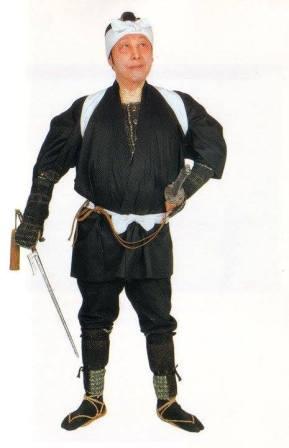The sword #2
Swords have played a central role in Japanese martial arts throughout history. Combative modus operandi with the sword
developed, and techniques were then devised to deal with the sword out of necessity. Jittejutsu was one such technique.
In feudal Japan, the social classes were divided into Shi (warriors), Nō (farmers), Kō (craftsmen), and Shō (merchants).
The yoriki and dōshin, senior feudal police stationed at bugyōsho (magistrate’s offices that also functioned akin to police stations)
were samurai, so were permitted to wear swords, and would arrest individuals with their swords on them when using the jitte.
Conversely, okappiki etc. were hired by the dōshin and were thus not considered samurai, so did not wear swords, and thus
engaged without swords.
Yoriki/dōshin and non-samurai such as okappiki learned different schools of jittejutsu, and examples of both still exist today. This form of cultural diversity should be applauded in our modern society.
While this may be obvious, the presence of swords has an impact on the distancing, techniques, and manner in which the jitte
is used. While swords are normally not worn in jittejutsu practice out of convenience, when one watches jittejutsu techniques
it is clear at a glance what social class the techniques were developed for.
日本武術では剣が中心的役割を果たしてきていると言っても過言ではありません。剣による戦闘様式が成立し、
必然的に剣を対処する方法も工夫されましたが、その一つは十手術です。
奉行所勤めの与力・同心は武士ですので、帯刀を許されていましたが、十手を使って相手を捕り押さえる場合も帯刀した状態で
相手に臨んでいました。
一方では同心に雇われていた岡っ引きなどは帯刀を許されず、そのまま臨んでいました。
与力・同心が修めた十手術の流派もあれば、岡っ引きなど武士とは違う社会的身分の人が修めた十手術の流派もあり、
どちらも現存しています。現代社会ではこの文化的多様性は非常に喜ばしいことで、誇るべきものです。
当然のことかもしれませんが、帯刀の有無で、相手を捕り押さえる場合の間合い、技、十手の扱い様が変わってきます。
十手術の稽古では便宜上、帯刀することは少ないですが、十手術の形を見てみると、その流派がどの身分の捕り物
のために作られたのか一見してすぐわかります。


